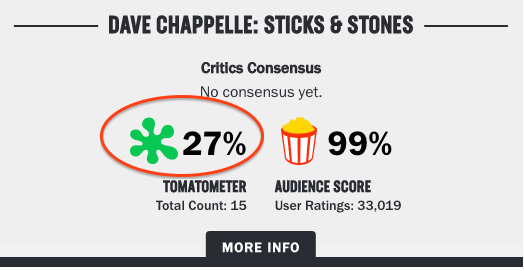Are chimps better at learning than humans?
Researchers showed chimps how to open a covered box that hid the inside and retrieve a treat. They also showed the same thing to young children. Both the chimps and young children successfully followed the steps and received a treat. But there was a catch. They added in unnecessary steps to the process, like tapping and poking the box.
On the next test, they gave them a clear box showing the fake ceiling in which tapping/poking would have no impact on retrieving the candy. The chimps skipped the unnecessary steps and to got the treat but when it came to the children, something strange occurred. For some reason, the kids repeated all the unnecessary steps they were previously shown.
The children’s decision-making was less rational, not because they are less intelligent than chimps, but because of the difference in the way we learn. Our learning is socially motivated. We imitate others’ behavior and emotions, many times unconsciously, even without function or reward (Insert childhood trauma).
Those we feel drawn to and consequently imitate, are those we perceive as high-status individuals. Chimps can copy, but the children looked up to the researchers to be taught. This tendency doesn’t stop once we become adults.
Many social media platforms are visually driven. Whether it’s the extreme strength, mobility, grace, or physical attributes. We are unconsciously calculating the social status of the individual. The higher the perceived status, the more we are compelled to imitate.
In a previous article I made an argument for the positive aspects of the Handicap-Principle used to signal status but there is a potential danger of mimicking high-status influencers: counter-signaling. Rob Henderson describes counter-signaling as “a form of self-handicapping, signaling that one is so well off that they can afford to engage in activities and behaviors that people typically associated with low status.”
In the social world, one signal is functional (increases status) and the other dysfunctional (decreases status). As people ascend to the top, advice tends to become less practical and more philosophical, intellectual, or even worse, moral.
He gives the example of a CEO commuting to work on a bicycle as a high-status activity because it was a choice and not a necessity. Showing up at your work on a bike as a delivery driver at Pizza Hut, merely signals that you can’t afford a car. A reason the fashion of affluent hipsters began resembling that of the homeless is because brand name clothes became accessible to lower class and ceased to be a reliable signal of status. We now fabricate worn holes into jeans to sell them at a higher price point.
A popular counter-signal is excessive humility. One step further is to actively bash the concept of hard work as promoting toxic “hustle culture”. Even when these are some of the people who worked their ass off the hardest to get to where they are, with little sleep and what they would now consider “overtraining”.
They claim that motivation doesn’t matter and it’s all about discipline. But at earlier stages, motivation was the very inertia that got them where they currently stand.
Body positivity seems well intentioned but it’s dissemination to the masses is done by many high-status individuals who invest large resources into maintaining a very typical body image. This study actually shows how women sometimes attempt to actively sabotage the attractiveness of other women by providing disingenuous beauty advice about their hair.
One hour morning routines are examples of a practice that signals status more than providing a practical strategy of reaching a level of achievement. Regular people have things like jobs, kids, and time constraints, that make it hard to watch the sunrise while grounding their feet before an ice bath.
“The problem is architects building structures to impress other architects --but plumbers don't act on impressing other plumbers.
Any activity where agents impress peers (architects, academia) rather than satisfying the needs constituents ends up rotting.- Nassim Taleb”
In the world of fitness, a signal can increase a certain coach’s status while decreasing another’s performance.
Just as material possessions such as clothes and cars no longer hold the same value of social signaling to the upper class as before, physical displays such as muscles and strength no longer hold the same value signal for trainers. The new status symbols are beliefs. In the world of exercise these beliefs are often biomechanical models.
“Luxury Beliefs are ideas and opinions that confer status on the upper class while often inflicting costs on the lower class”- Rob Henderson
Once the industry normalizes a belief, the influencer must abandon it and find a new model to wear as a status symbol.
A popular nutrition expert may have started promoting the Paleo diet while it was on the cutting edge but once it becomes mainstream, they move to Keto, then to Carnivore. As the trend saturates the market, they must separate themselves from the former belief system- it is now Carnivore plus fruit and honey.
The nutrition influencer can afford to only eat grass fed meat and organic, non-gmo produce, just as a high status trainer can afford to only teach joint circles and isometrics.
An expert “majoring in the minors” is likely catering to the population that has already consumed the majors. The elite lifter who squats 800lbs and spent decades becoming intimate with their body, will probably find the RPE scale more useful in their programming than an average lifter.
The higher the status of the teacher, the more broad their reach. The greater the reach, the more selection bias occurs. This is the danger zone where experts can become removed from reality. When online trainers only train other trainers, the feedback they receive becomes skewed. The function of this space is the generation of art and innovation, not necessarily practicality.
There is an inverse correlation between the people I most want to train with and the people I would send my grandmother to train with.
Place yourself in the shoes of a movement guru, who has spent their life mastering their craft and pushing boundaries. They live inside the gym. They will likely approach movement with curiosity, as an artist. They will promote exploring movement and declare that there is no right way to move. While this is true, it is not necessarily helpful to the majority of the population, who is actually restricted by total freedom and and lack of order. They will require more constraints, structure, and direction, especially within an hour session a couple times a week. One requires the security of more rules while the other needs to break free from their restraint.
While the general population may need to invest more in exploitation, high status coach gains more status through exploration.
If the master achieved their skill capacity as a kid (gymnastics, martial arts), you’d be better off asking advice from someone who gained them as an adult, even if to a lesser degree. It’s counter-intuitive but it’s often better to learn from someone just ahead of you than at the top of the hierarchy.
It isn’t about whether the advice is right or wrong. It’s about whether the advice is functional or non-functional for the specific individual at their current level.
Instead of asking what the biggest guy in the gym does, ask them what they did at your level.







This is fantastic. A great reminder for me - It's easy to lose your grounding when you live in the online space.